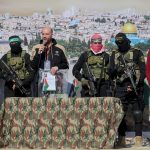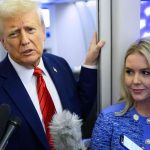President Xi Jinping, BRI And Nepal

– Hiranya Lal Shrestha
In Nepal, these days people talk about President Xi Jinping’s forthcoming visit to Nepal, his world-famous Belt and Road Initiative (BRI) and consolidation of Nepal-China relations. The Ruling party of Nepal, CPN school department organized a seminar on Xi Jinping thought on September 23-24, 2019 at Kathmandu. Inaugurating the seminar, Prime Minister KP Oli said that Xi Jinping thought with Chinese characteristics for a new era is significant to China and beyond. Only socialism can benefit the overall development of China. In Concluding remarks, CPN President Puspa Kamal Dahal ‘Prachanda’ said that ‘socialism with Chinese characteristics is a focus of global dimension. Nepalese Communist leader learned a lot from Xi Jinping’s thought and creative application of Marxism by him was appreciated.’
Nepalese media focused on President Xi Jinping’s BRI Initiative and possible benefits to Nepal highlighted. They expressed confidence that during President Xi’s Nepal visit solid agreement to link Chinese railways to Kathmandu will be concluded; Kerung will be Chinese gateway to South Asia. Trilateral co-operation between China-Nepal-India will take a natural course in the future.
Inclusive Globalization
The aim of the BRI is to share development and prosperity with friendly and harmonious relations to it’s neighboring countries and the world. Thus China wishes to play an important role and create a new wave in the globalization process. The seed of globalization of the Chinese economy lies in Silk Road development in the ancient period. It expanded from Xian to Greece via the Central Asian land route. Chinese legendary explorer Zheng reached East Africa taking See route as early in the 15th century.
The people’s Republic of China is founded under the chairmanship of great leader Mao Zedong in 1949. It brought about a positive change in the world balance of power against imperialism and colonialism. The newly established the People’s Republic of China adopted the foreign policy based on equality, independence, and peaceful coexistence and mutual co-operation with all the countries. China conducted its political globalization policy participating in Bandung conference in Indonesia in 1955 and strengthened solidarity with the global south consistently.
Another Great Deng Xiao Ping drove to economic globalization opening China and modernizing her economy after 1978. Deng was the chief architect of the socialist market economy with Chinese characteristics. His successors scored more prosperity integrating China with the world market economy.
President Xi Jinping’s New Initiative
While Xi Jinping assumed China’s leadership as the President, he presented the most significant and visible concept and proposals like BRI. President Xi Jinping redefined China as a civilization state and reemphasized the holistic approach of development and modernization in a global scale. He further provided a multi-polar global relationship establishing BRICS. Chinese President Xi’s speech at the world economic forum Davos in January 2017, projected China as a champion of an open economy in contrast to the anti-globalization drive of US president Trump and UK’s Brexit policy. China stood in favor of inclusive globalization. The greatest event of globalization is the inauguration of the international conferences on BRI in Beijing on May 14-15, 2017. President Xi called the BRI as a ‘project of the century’. This represented 60% people of the world. It is the BRI that exceeds all such previous plans. It is 7 times larger than the post-second world war US Marshal plan.
Common Destiny
President Xi Jin Ping’s guiding principle of BRI is to promote and develop the common destiny of human beings with mutual respect and co-operation in the framework of inclusive globalization. The main features of this common destiny are as follows:
I. More Opening
President Xi criticizes protectionism and anti-globalization trends. He emphasizes more opening and reform. He is against trade barriers. He is expending free trade areas inside China and entering into free trade agreements with other countries.
II. More reforms
Since China’s accession to WTO in October 2001, China speeds up reform, China reduced tariff and nontariff barriers provided liberal action and facilitated trade and investment. Anti-Corruption drive is Xi’s another bold step. It curved corrupted power-centric vested interest elites and helped for transparency and accountability. He has taken various steps to establish the rule of law.
III. Civilization Modernization
President Xi re-introduced China as a civilization state. He disagrees with the concept of modernization means westernization. He takes science, technology and universal knowledge from sources and evolves modern course with Chinese civilization identity. China sticks to uphold coexistence among various civilizations instead of conflict, dialogue instead of confrontation, interaction instead of isolation and inclusion instead of exclusion. China also shares common prosperity.
IV. Alternative Financing
President Xi’s contribution to the financial sector is to establish alternative institutions like BRICS Bank, AIIB to curb the monopoly of the western dominated financial institutions like IMF, World Bank, and ADB. Alternative sources of the loan will less interest to the least developed and developing countries is to rescue them from external ‘debt trap’.
V. More connectivity
President Xi Jinping’s priority is more connectivity, so he introduced BRI as a ‘century project’ of global importance. He emphasizes in developing high-quality infrastructure projects with 21st-century expertise and governance standards.
VI. Holistic Approach
President Xi Jinping adopted a holistic approach of development, integrating different sectors simultaneously. He introduces the concept of innovation, coordination, green, open and shared development. He relied on a team of political cadres, military leaders, bureaucracy consisting of world-class financial technocrats, economic management exports. He set two-century goals to celebrate the hundred anniversary of CPC and PR China (2049) to realize the Chinese Dream of great national rejuvenation with time-bound development targets set and implemented seriously.
Opportunity For Nepal
Nepal has officially joined, participated in BRI in international conferences in 2017 and 2019. It has paved the way for potential investment in the country for infrastructure development, particularly in the connectivity sector. President Xi Jinping’s forthcoming visit to Nepal will boost Nepalese prosperity activating BRI implementation. Kerung turns to be a Chinese gateway to South Asia. Thus Nepal and China will share the fruit of BRI through Trans-Himalayan Corridor.
(Note: Hiranya Lal Shrestha is a senior writer and former Nepalese ambassador to Russia)










